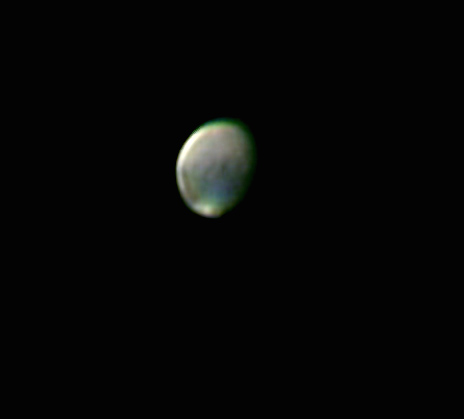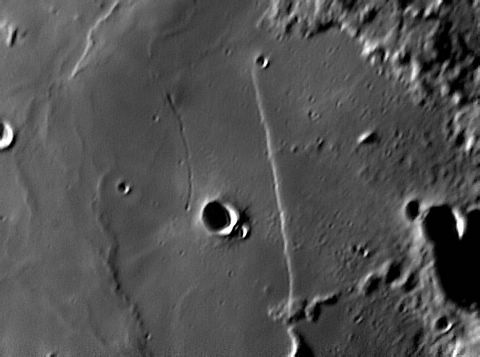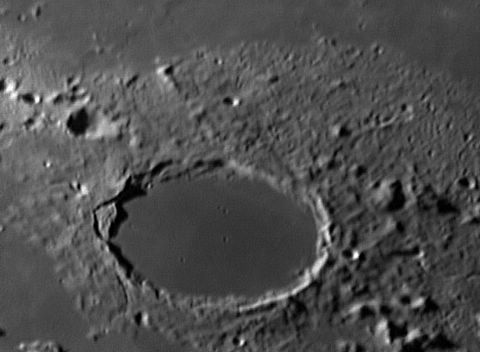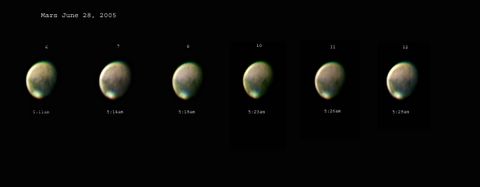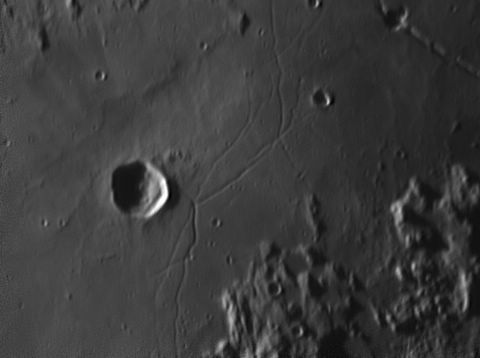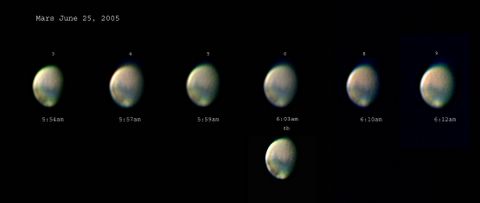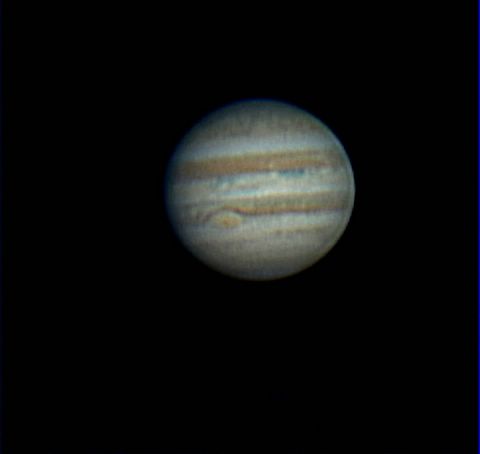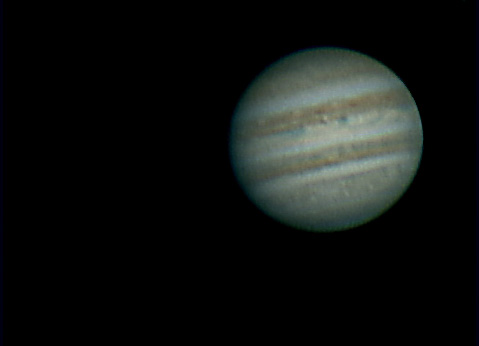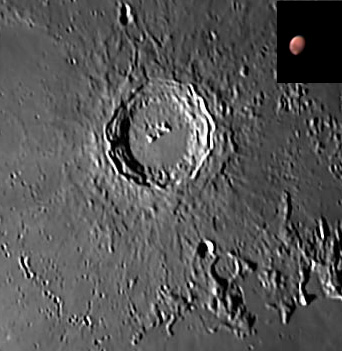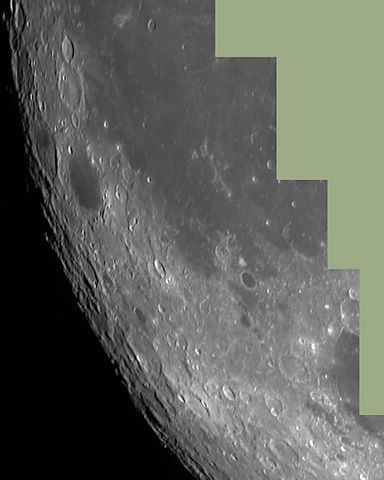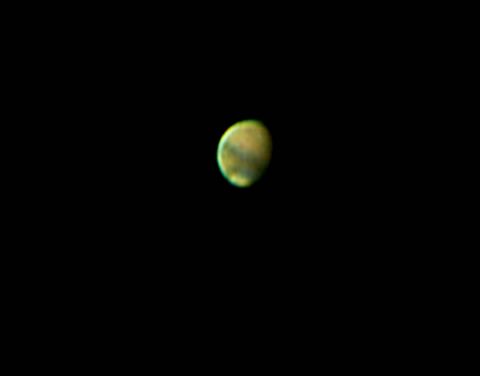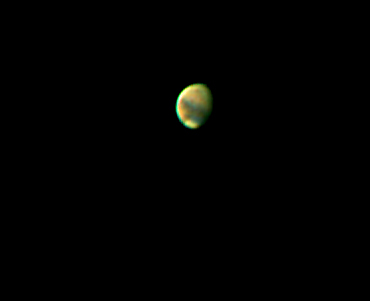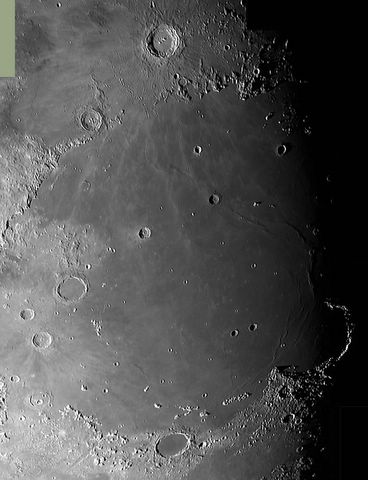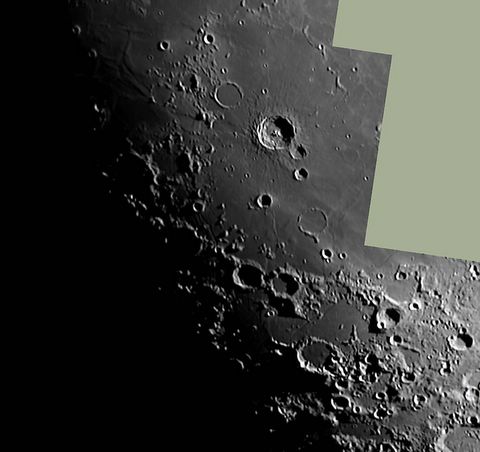Thursday, June 30, 2005
Wednesday, June 29, 2005

This is Mars compared to the BAA chart. Solis Lacus is the dark feature near the central meridian--just right of center against the terminator. Mare Sirenum is on the left. Aonius Sinus is the dark region near the lower center just above the south polar cap. It is tough to line up the feature up definitively when the features are so small and blurred by the atmosphere.

Tuesday, June 28, 2005
Monday, June 27, 2005
Saturday, June 25, 2005

This compares the images today and yester day with nearly the same central meridian longitude, 138 and 132 degrees, with a section of a BAA chart showing Mare Sirenum and the same longitude range. The center each image is marked by white and red circles; likewise, on the BAA chart. The map projection doesn't curve with the planet, but the chart shown is a decent match for the central region of the two images.

Friday, June 24, 2005

Mars -- sequences 9 and 12 seem the sharpest. The processing in registax was similar for each sequence 8-13; some minor color balance and level adjustments were made to make each sequence's image comparable to the other sequence's images. Images 9 and 12 were given exagerated contrast, 9b and 12b, to see surface detail. Some of the light spots may be real, though there are differences between 9b and 12b which make me wary of overinterpreting the small features. I guess we'll see as Mars gets closer. Compared to the earlier images I used a smoother algorithm for enlarging the images so the background noise level is lower on these images.

Thursday, June 23, 2005

The chromatic aberration in the Mars images bothered me. The blue image shows more of the haze and the polar cap than the other channels, but also seems to fluctuate and drift out of register more from the effects of seeing than the other two channels. Note the surface detail in the red channel, though the green is ok and shows the polar cap well.

Wednesday, June 22, 2005

I think I can identify the albedo markings now. I've been unsure of the identifications even after looking at charts. The bar slanting down from the middle to the right on all three images, but most distinct in the 5:19 image is Mare Sirenum. The planet is rotating from left to right. Meade 10" and 2x Barlow with Toucam.

Tuesday, June 21, 2005

More Mars. I had a real fight with Registax on the last two images. The 5:15 exposure was much much easier to process and the limb of the planet came out better. I tried varying the processing to minimize artifacts near the limb which is why there are two versions here. I'm not sure what is real and what is artifact on these images. The June 20 images were easier.


